“If you ask for proof that I am alive again, they threaten to cut my foot off and send it to you ... The Dutch government is putting pressure on the Irish government to get me released in exchange for these three people: Hyland, Dugdale, Mallon ... Please help me.”
This typed note, dated October 13th, 1975, is one of the documents now held in University of Limerick’s (UL) special collections and archives. It’s part of the collection that Dutch businessman Tiede Herrema, who was kidnapped on his way to work half a century ago, donated to the university 20 years ago.
Like all the other transcripts of recordings made by Herrema during that time, statements to the media and letters purportedly from him, the above extract was written under duress.
Herrema, who managed the Dutch-owned Limerick factory, Ferenka, had been kidnapped by IRA members Eddie Gallagher and Marion Coyle on October 3rd, 1975.
RM Block
They wanted the release of republican prisoners Jim Hyland, Rose Dugdale and Kevin Mallon. Over the 36 days of Herrema’s captivity, his story gripped the country and made international headlines. He spent the latter part of his captivity in a house in an estate in Monasterevin, Co Kildare.
The documents held by UL give a behind-the-scenes account of what went on during those 36 days. They also include a fascinating transcript of an 11-page statement Herrema gave to gardaí in 1976, before the Central Criminal Court case the following year.
The first task of the authorities, once the news of the kidnapping broke, was to establish if Herrema was alive. He had been abducted at gunpoint from his Hillman Hunter car on his way from his home in Castletroy to the factory where he worked. At the time, the Ferenka factory was the biggest employer in Limerick.
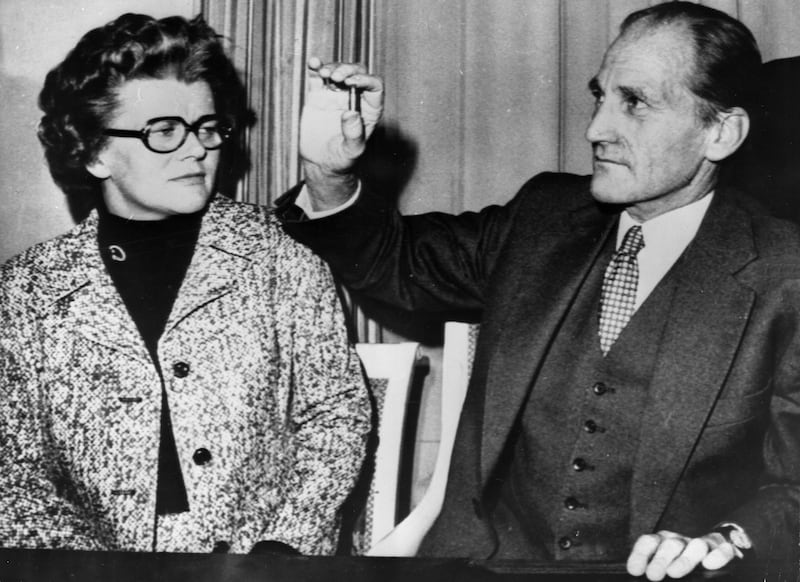
A telex sent on October 8th from Ferenka staff in Limerick to colleagues in the Netherlands read: “Intensive police and army search actions east of Limerick were continued today.” A staff member had been to visit Herrema’s wife Elizabeth and son Jelle.
“Mrs Herrema and son Jelle are still in the same location. I visited them yesterday and today. Both had a poor rest and keep up their admirable good spirit and see the matter realistically,” the message read.
The following day, October 9th, Ferenka issued a public statement to the effect they were satisfied Herrema was alive. They stated they had: “received a message which in their opinion is authentic”. A code word had been supplied by Herrema, one which the authorities checked with his family to see if they recognised its meaning. The code was “Tornado sailing boat”, which referred to the particular kind of boat that Jelle sailed.
[ The kidnapping: Tiede Herrema’s ordealOpens in new window ]
While in captivity, Herrema was forced to record various messages of antigovernment propaganda that were dictated to him by Gallagher. These were then passed on and some, as directed, were shared and broadcast with the media.
The tape recording made under duress that had been passed on with the “sailing boat” code words at the end had started: “The organisation who have abducted me is called the Irish Liberation Organisation. They have carried out various bombing missions on England over the last three years ... They have organised prison escapes, the last being in Portlaoise on St Patrick’s night when Free State soldiers shot an unarmed prisoner.
“They have told me to state that from the very slanderous statements which the papers have told about men in their organisation that the people responsible will be punished.
“They are not interested in money ... So the only way my life can be saved is that everyone should impress on the Irish government to release the three political prisoners named, one of them [Rose Dugdale] is the mother of a young child [her son with kidnapper Eddie Gallagher].
[ Tiede Herrema: ‘The kidnappers were nervous. So was I’Opens in new window ]
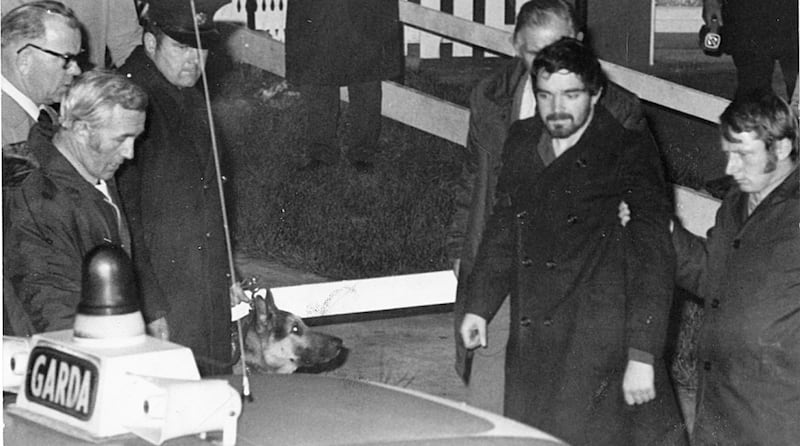
“I don’t know where I am. My eyes are blinded by cloth. My hands and feet are tied. My ears are full of cotton wool ... My abductors are heavily armed and they say that they will not give the Irish government the satisfaction of getting me back alive, and will use me as a hostage if the Secret Police discover where I am being held.
“I have tried to help Ireland, surely the Irish government will now help me. I ask them for my life.”
Herrema was blindfolded and moved around by car from various safe houses, one in Mountmellick, Co Laois, for more than a week. At one point, when the blindfold was temporarily removed, he saw a plastic bag in the room with a slogan that said “Fresh Fish from White’s in Mountmellick”, and guessed the town must be nearby.
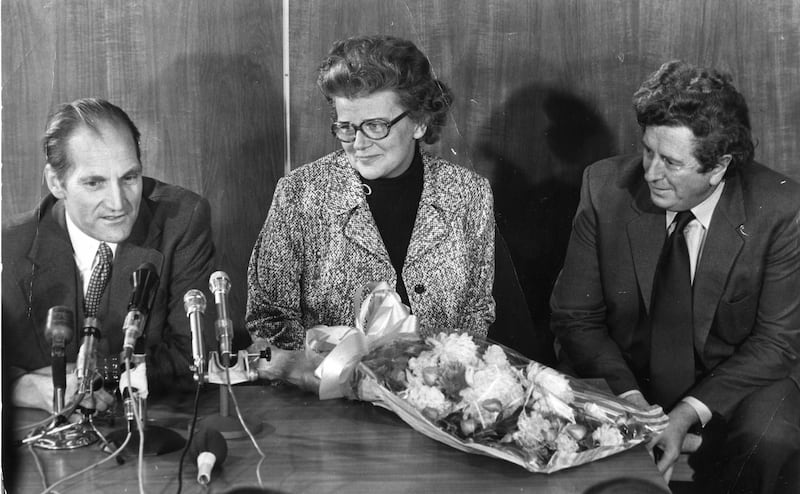
Various people whose names he did not know and whose faces he did not see, including children, called to the house with food over the period he was kept tied to a bed in the Mountmellick house. He recalled being plagued with fleas in that bed.
They moved on at night from the Mountmellick house, changing cars more than once. Gallagher told Herrema they were “going north”. In between these car swap overs, he was temporarily hidden in haylofts of barns in the rural midlands. His hands and feet were tied and a coat put over his head.
During the drive to the Monasterevin house, which occurred in the middle of the night, Herrema tried to engage Gallagher in discussion. Coyle refused to have any conversation with him for the duration of his captivity, other than to issue orders.
From the beginning I had in mind to build up a relationship with those two people and try to direct the aggression of Eddie Gallagher in another direction
In the statement Herrema gave the following year, before the case coming before the Central Criminal Court, he said that himself and Gallagher had discussed during that car journey: “Communism in Russia, communism in Hungary, the importance of industrialisation in Ireland [of which Ferenka was a part], the rights of women, the position of the IRA and the Provisional IRA. It gave me at least the possibility to build up a relationship ... from the beginning I had in mind to build up a relationship with those two people and try and direct the aggression of Eddie Gallagher not in my direction but in another direction.”
They arrived at the Monasterevin house at St Evin’s Park on October 12th. Herrema was taken to a small bedroom where there was a mattress, on the floor, and some blankets. His feet and hands were tied, but the blindfold was left off. Other people, unseen to him in rooms downstairs, came and went with food.
[ Tiede Herrema: ‘The kidnappers were nervous. So was I’ ]
The kidnappers had access to radio, television and newspapers and were assiduously following the coverage. None of their demands was being met. Once the house was located, 12 days after their arrival in Monasterevin, on October 21st, the situation changed. It became a siege. Gardaí, Special Branch, mediators and media were all present.
In the afternoons, Herrema was forced by Gallagher to appear at the upstairs bedroom window and shout out to the waiting media the messages Gallagher had written. The kidnappers were hoping to put additional pressure on the government to release even one of the three prisoners; Dugdale was their preferred choice.
In his Central Criminal Court statement, Herrema said that during these times when he was forced to shout out Gallagher’s messages “he always was behind me. My feet were tied. He had his hand on my feet and he had a gun to my head or in my back”.
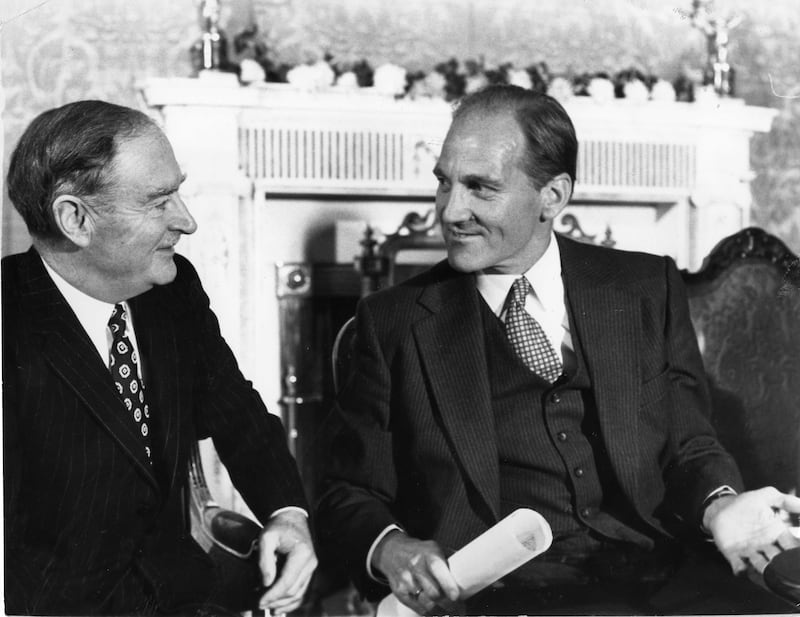
During these times, he saw messages written on pieces of cardboard, held up by the media, encouraging him to jump out the window. But they could not see Gallagher on the floor behind him or know that the kidnappers took turns around the clock, watching over Herrema with a gun.
It was now the authorities camped outside the house who sent in food for the kidnappers and kidnapped. “When the food came up from Mr Wren [Chief Superintendent Laurence Wren, who was directing the negotiations] I must say they [Gallagher and Coyle] were reasonable in dividing it and that each of us had the same.”
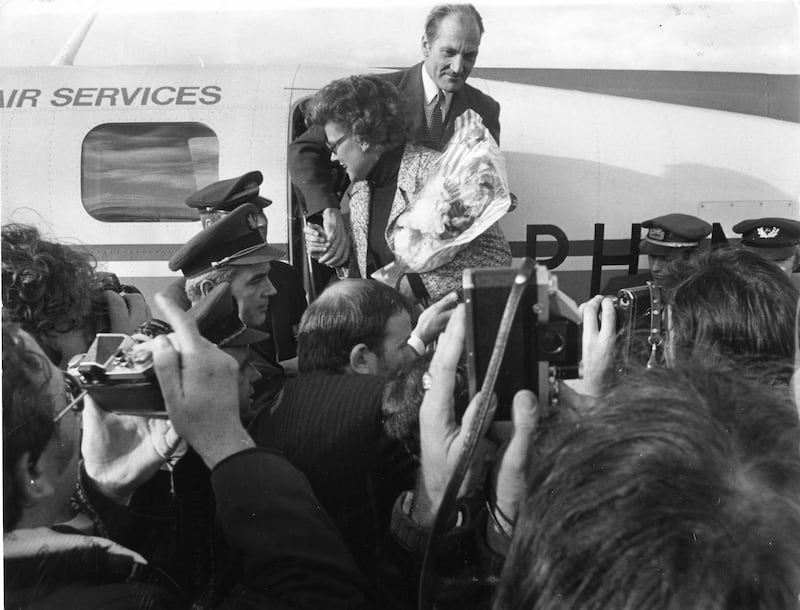
At one point, before the kidnappers eventually surrendered, Gallagher, with an eye to the inevitable outcome of a trial, “said I shouldn’t give evidence against him. That I should be very careful, that his organisation was very big and as soon as he had an indication of that [giving evidence] that they could find my children and my wife”.
On November 7th, the kidnappers surrendered. Herrema had survived 36 days in captivity. The public learned of the news shortly afterwards via a newsflash, which interrupted radio and television broadcasts.
At the subsequent trial in 1976, Gallagher received a 20-year sentence and Coyle 15 years. The Herremas had already left Ireland by then and returned to the Netherlands. The Ferenka factory closed in 1977.
[ The Herremas secured a unique place in the admiration and affection of the Irish people ]
Speaking in 2005, while donating his papers to UL, Herrema said: “During the last 30 years people asked me, ‘Did the kidnapping change your life? Do you think about the kidnapping daily?’ I never know exactly what to say and how to react, but I try to be honest in my answers. Of course it has changed my life.”
Tiede Herrema died in 2020, three days after his 99th birthday. His wife Elisabeth had died five days earlier.
- Sign up for push alerts and have the best news, analysis and comment delivered directly to your phone
- Join The Irish Times on WhatsApp and stay up to date
- Listen to our Inside Politics podcast for the best political chat and analysis


















